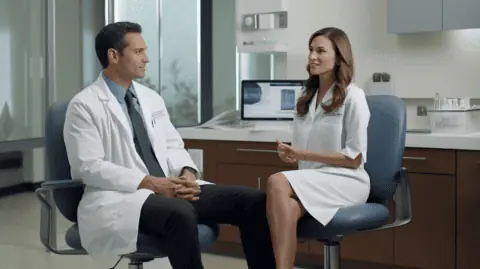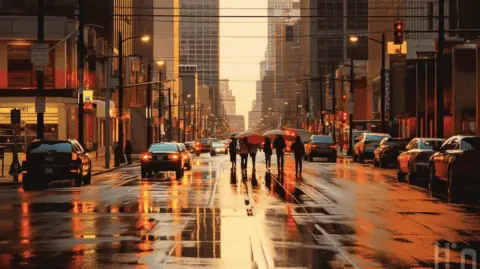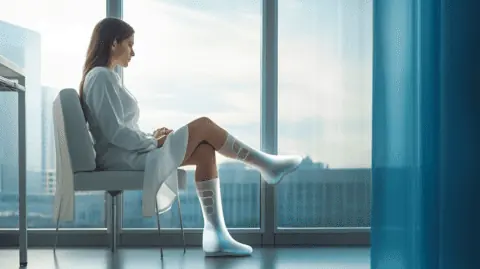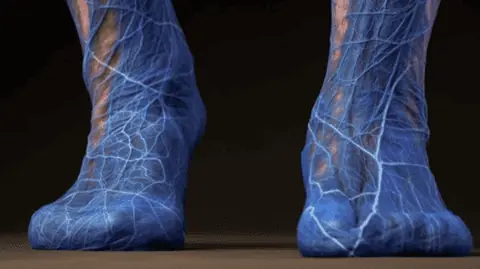Your veins take blood from the capillaries to your heart. This requires the blood to flow against gravity. Fortunately, leg veins have one-way valves to prevent blood from flowing back. However, at times, these valves fail to close – leading to “reflux”. The veins may grow larger and become distorted – resulting in varicose veins.
The goal of Peak Vein & Vascular’s treatment is to relieve symptoms, prevent complications and to get you excited about how you look again!
Conditions We Treat
Varicose Veins
Varicose veins are enlarged, swollen veins that often appear blue or dark purple. They’re caused by faulty valves within the veins that allow blood to flow backward or pool, leading to the veins becoming distended. Symptoms can include aching legs, swollen ankles, skin discoloration, and a heavy feeling in the affected limb. In severe cases, varicose veins can lead to complications such as skin ulcers or blood clots.
Spider Veins
Spider veins are smaller, twisted veins that are visible through the skin. They are most commonly found on the legs and face. While they can cause discomfort and cosmetic concerns, spider veins are usually not harmful. However, they can sometimes be a sign of underlying venous disease.
Deep Vein Thrombosis (DVT)
DVT is a serious condition where a blood clot forms in a vein located deep inside your body, usually in the lower leg or thigh. Symptoms can include swelling, pain, and redness in the affected area. If left untreated, the clot can travel to the lungs, causing a potentially life-threatening pulmonary embolism.
Venous Ulcers
Venous ulcers, also known as venous stasis ulcers, are open sores that can develop when the leg veins don’t return blood back toward the heart as they should, a condition known as venous insufficiency. These ulcers are often painful and can take a long time to heal. They most commonly occur on the inside of the leg, just above the ankle.
Treatments We Offer
Endovenous Laser Treatment (EVLT)
EVLT is a minimally invasive procedure used to treat varicose veins. A small laser fiber is inserted into the vein, and heat is applied to shrink and collapse the vein wall, effectively closing off the faulty vein. This procedure is performed under local anesthesia and typically takes less than an hour. Recovery time is minimal, and most patients can return to their normal activities the same day.
Sclerotherapy
Sclerotherapy is a common treatment for both varicose and spider veins. It involves injecting a solution directly into the vein, causing it to scar, collapse, and eventually be reabsorbed by the body. This procedure is typically performed in a doctor’s office and requires no anesthesia. It’s well-tolerated by most patients, although some may experience minor side effects such as bruising or swelling at the injection site.
VenaSeal
VenaSeal is a vein closure system that uses a medical adhesive to close off varicose veins. The adhesive is delivered through a small catheter and works by sealing the vein shut, rerouting the blood to healthier veins. This procedure is minimally invasive and has been shown to cause less pain and bruising compared to other treatments for varicose veins.
Phlebectomy
Phlebectomy is a minimally invasive procedure used to remove varicose veins on the surface of the leg. Small incisions are made in the skin through which the problematic veins are removed. This procedure is usually performed under local anesthesia and leaves minimal scarring.
Compression Therapy
Compression therapy involves wearing specially designed stockings that apply consistent pressure to the legs. This pressure helps the veins move blood more efficiently, reducing the symptoms of varicose veins and preventing further complications. These stockings come in various sizes and strengths, so it’s important to have a healthcare professional measure your legs to ensure you get a proper fit. They’re typically worn during the day and taken off at night.
VNUS Closure (also known as Radiofrequency Ablation)
TheVNUS Closure procedure, also known as Radiofrequency Ablation, is a minimally invasive treatment for varicose veins. It uses radiofrequency energy to heat and seal off the faulty veins. During the procedure, a thin catheter is inserted into the vein through a small opening. The catheter delivers radiofrequency energy to the vein wall, causing it to heat, collapse, and seal shut. The procedure is usually done under local anesthesia and most patients report feeling little, if any, pain during the procedure. After the treatment, the blood is naturally rerouted to healthy veins, and over time, the treated vein is absorbed by the body.







